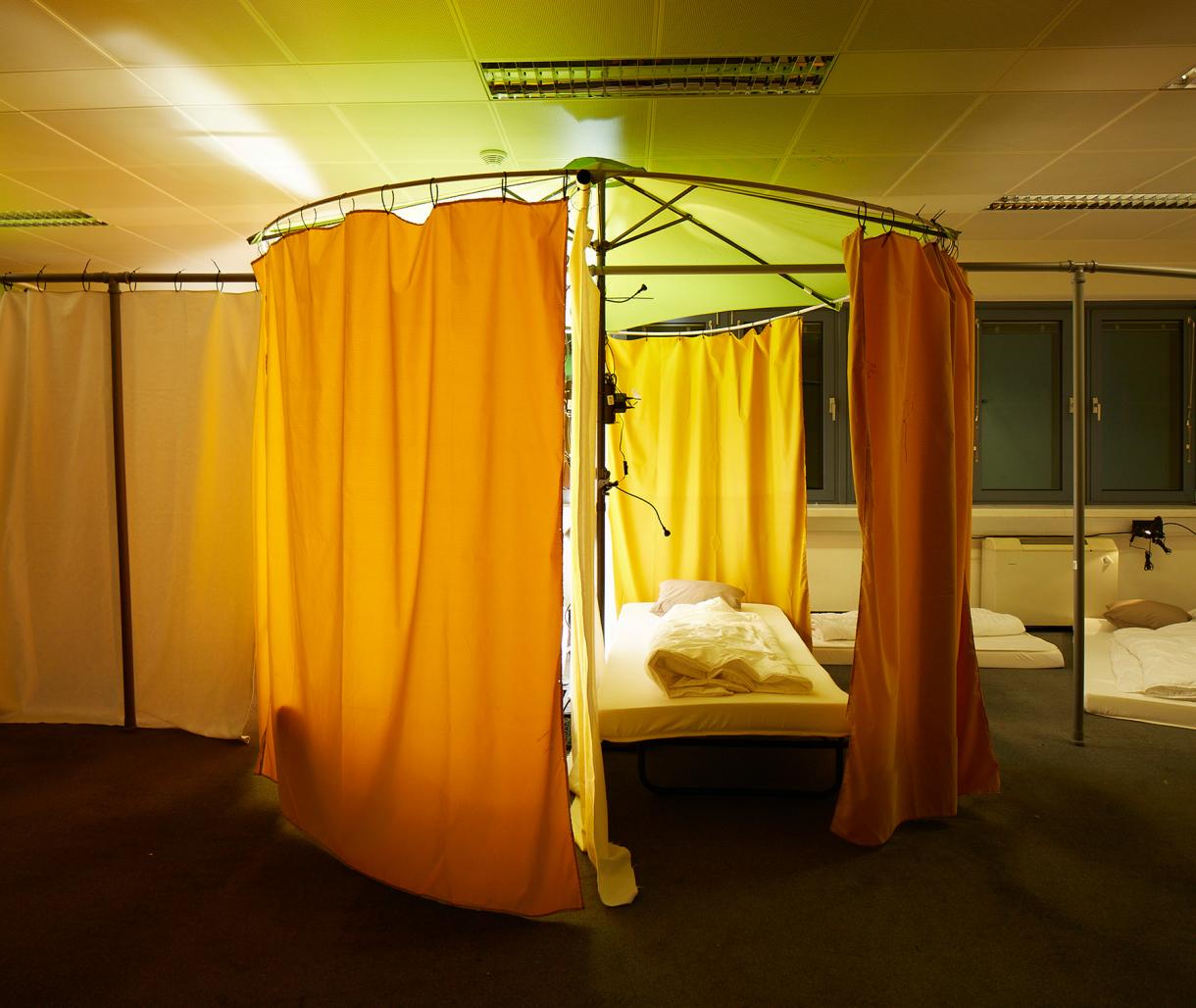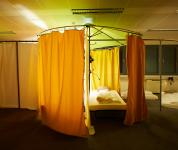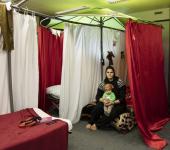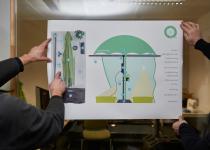Basic needs
Safeguarding privacy – marking a place where someone can be alone, undisturbed by external influences – was, for Caramel Architekten, the first and most important subject of their intervention and they saw the time limit as a condition of - rather than a limitation on - their thought process. And while such ideas as mixing groups of residents, which were developed by the Biennale Team during the preparatory work for another building that was available for the medium term, are temporarily overtaken by practical considerations in the case of an emergency shelter, they remain central to future scenarios in which further incentives are required to positively
support communal life in the building. In order to improve temporary living together in a residential community of this size as quickly as possible the architects initially concentrated on a clearly defined immediate measure based on two key questions:
1. How can one create privacy at minimum cost and in a very short time without intervening in the substance of the building?
2. How can one increase the permeability of the building to the outside as a way of countering the isolation of the residential community and generating openness? Safeguarding privacy through the creation of suitable separating elements and opening the community through the creation of connections to the outside were seen not as isolated subjects but as two sides of the same question. Caramel Architekten have already met similarly complex requirements with fleet-footed prag-matism in such projects as the visitor platforms at
VOEST, the City of Culture office on Linz’ main square, the Science Park Linz and several design and art objects as
well as a number of residential projects with modest budgets.
2015
2016
See also:
https://worldarchitecture.org/architecture-news/cehhg/austria-focuses-refugee-crisis-with-the-topic-of-places-for-people-in-venice-biennale-2016.html
Architecture: Caramel architekten
Photographer: Paul Kranzler / Matthias Cremer







